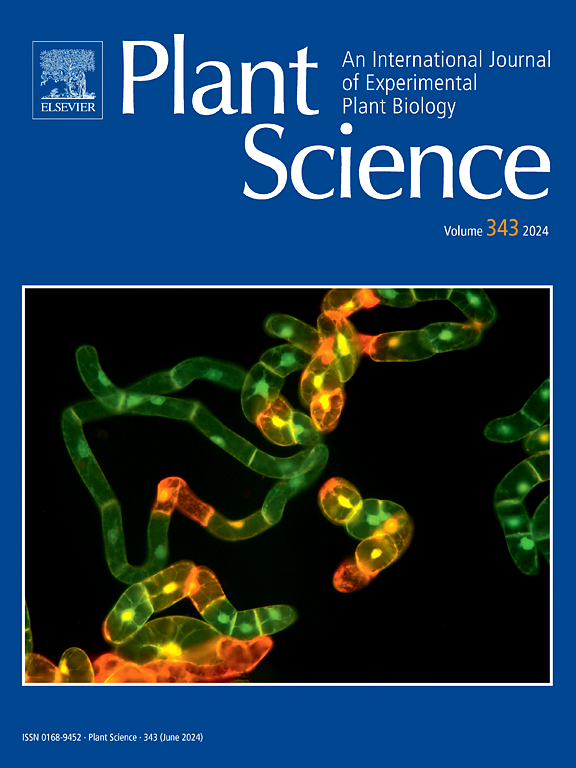钙介导的缓解策略和缓解砷诱导植物胁迫的新途径
IF 4.2
2区 生物学
Q2 BIOCHEMISTRY & MOLECULAR BIOLOGY
引用次数: 0
摘要
潜在有害元素(pte)在空气、土壤和水资源中的存在是一个世界性的环境问题。砷是被认为毒性和致癌性最强的pte之一。即使在极低浓度下,暴露于砷的植物也可能经历几种形态、生理和生化变化。砷对植物的毒性因其在植物中的形态而异(例如,亚砷酸盐,As(III);砷在土壤-植物系统中的新研究表明,砷与植物种类以及其他影响植物中砷积累的土壤参数有关。砷胁迫通过影响小分子非编码rna (micro- rna)介导的基因表达模式,改变植物在不同发育阶段的代谢级联反应,而这些基因是植物适应氧化胁迫所必需的,并在许多细胞过程的调节中发挥关键作用。本文综述了钙(Ca2 +)对植物和土壤环境中砷毒性的影响。砷胁迫下的植物表现出砷吸收增强、氧化胁迫增加和生长抑制。砷毒性调节碳水化合物、脂质和蛋白质代谢以及DNA结构。简要介绍了Ca2+、Ca通道和Ca传感器在信号通路中的作用。砷对土壤生态系统的毒害是人类面临的一个世界性问题。砷的毒性、耐受性和植物利用钙修复污染土壤是本文综述的重点,同时也强调了砷在土壤-植物系统中的重要作用机制。本文章由计算机程序翻译,如有差异,请以英文原文为准。
Calcium-mediated mitigation strategies and novel approaches to alleviate arsenic induced plant stress
One worldwide environmental concern is the presence of potentially hazardous elements (PTEs) in air, soil, and water resources. Arsenic is one of the PTEs that is thought to be the most poisonous and carcinogenic. Plants exposed to arsenic may experience several morphological, physiological, and biochemical changes-even at extremely low concentrations. Arsenic toxicity to plants varies with its speciation in plants (e.g., arsenite, As(III); arsenate, As(V)), with the kind of plant species, and with other soil parameters affecting arsenic accumulation in plants, according to new study on arsenic in the soil-plant system. Arsenic stress modifies metabolic cascades in plants at different developmental stages by affecting the pattern of gene expressions mediated by small non-coding RNAs (micro-RNAs), which are essential for plant adaptation to oxidative stress and play a key role in the moderation of numerous cellular processes. In this review, we investigated the impact of calcium (Ca2 +) on the toxicity of arsenic in plant and soil environments. Plant grown with arsenic exhibited enhanced arsenic uptake, increased oxidative stress and growth inhibition. Arsenic toxicity modulates carbohydrate, lipid, and protein metabolism along with DNA structure. Role of Ca2+, Ca channels and Ca sensors to signaling pathways also described briefly. A worldwide issue for humanity is the poisoning of soil ecosystems by arsenic. Its toxicity, tolerance, and phytoremediation of polluted soils utilizing calcium were the main points of the recent review, which also highlighted the significant mechanisms of arsenic in soil-plant systems.
求助全文
通过发布文献求助,成功后即可免费获取论文全文。
去求助
来源期刊

Plant Science
生物-生化与分子生物学
CiteScore
9.10
自引率
1.90%
发文量
322
审稿时长
33 days
期刊介绍:
Plant Science will publish in the minimum of time, research manuscripts as well as commissioned reviews and commentaries recommended by its referees in all areas of experimental plant biology with emphasis in the broad areas of genomics, proteomics, biochemistry (including enzymology), physiology, cell biology, development, genetics, functional plant breeding, systems biology and the interaction of plants with the environment.
Manuscripts for full consideration should be written concisely and essentially as a final report. The main criterion for publication is that the manuscript must contain original and significant insights that lead to a better understanding of fundamental plant biology. Papers centering on plant cell culture should be of interest to a wide audience and methods employed result in a substantial improvement over existing established techniques and approaches. Methods papers are welcome only when the technique(s) described is novel or provides a major advancement of established protocols.
 求助内容:
求助内容: 应助结果提醒方式:
应助结果提醒方式:


